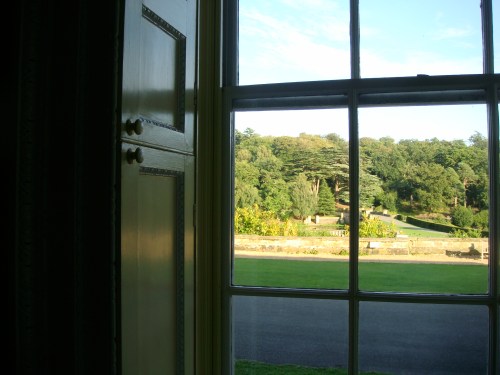Some months ago I was at Ashburnham Place for a long weekend with members of my church. It was a time of fellowship and relaxation with family and friends, interspersed with sessions of learning and contemplation.
During the breaks, I took the opportunity to wander around and observe how real care and attention had been given to the design of everyday things there. Take the shutters here as an example, shown in the closed position:
What shutters? I hear you ask. And that’s my precise point. Now look at this photograph, with the shutter in the open position:
I thought it was a great exposition of good design, covering the three things that really matter to me in such contexts: functionally valuable, aesthetically pleasing and able to stand the test of time. Isn’t that what good design is?
Here are a couple more examples of similar shutters elsewhere at Ashburnham, again showing the closed and open positions:
While I was wandering around the grounds, I was very taken with this view:
An amazing vista, conceived by someone who was unlikely to be alive at the time his/her conception reached maturity. An example of true delayed gratification, someone who genuinely designed something for usage and enjoyment by generations to follow. There is something breathtaking about it I just can’t put into words, something that is quintessentially about good design.
During one of the breaks, I had the opportunity to go to Bodiam Castle. People knew how to protect homes in those days. Especially homes built by the ill-gotten gains of marauding into other peoples’ homes! And done before the invention of uncivilised, unsightly, un-everything barbed wire.
Talking about barbed wire, I noticed this when I was last at the new Ribbit offices off Castro in Mountain View:
Notice the studs? Subtle enough, not particularly unsightly or disfiguring, and apparently for one purpose only: to prevent skateboarders “grinding” on the raised edges. You may argue that if one has to have such things, it is better to have them tastefully implemented. But I would rather they weren’t there in the first place. It’s like designing a tasteful implementation of DRM. The very idea is absurd.






